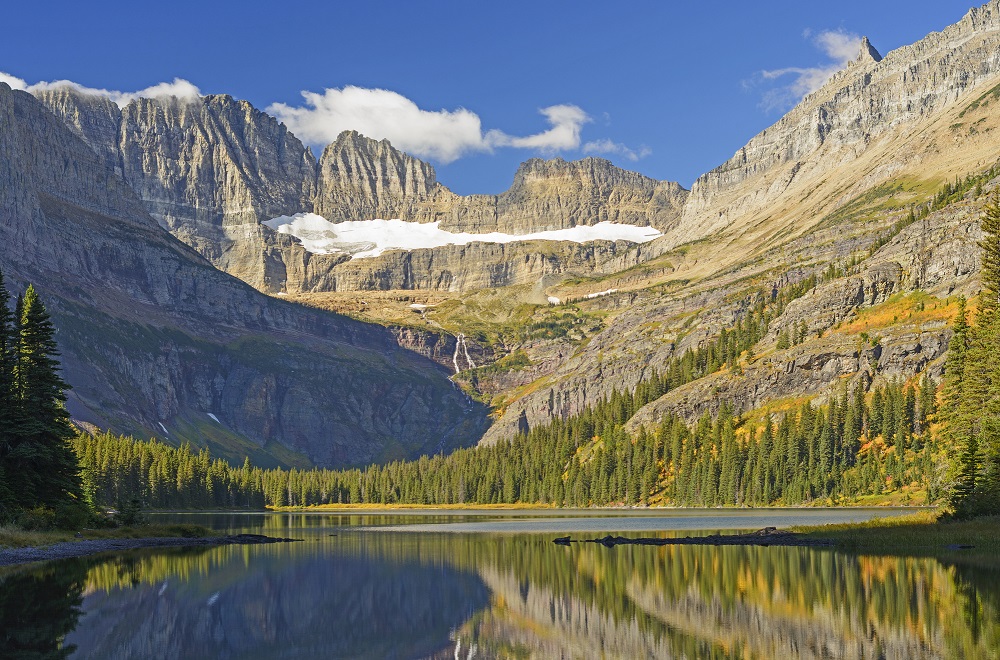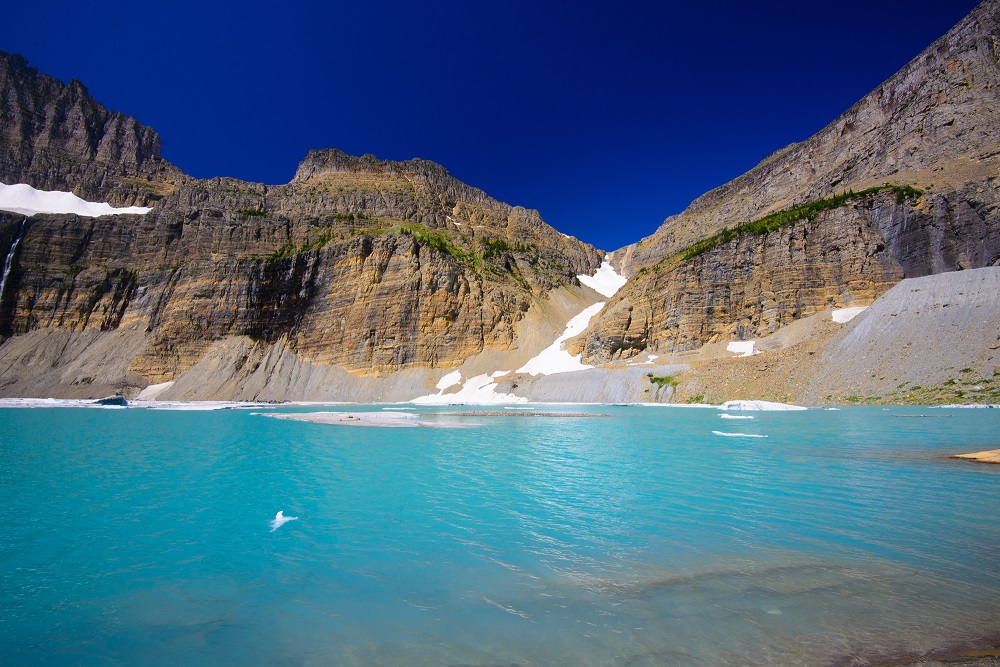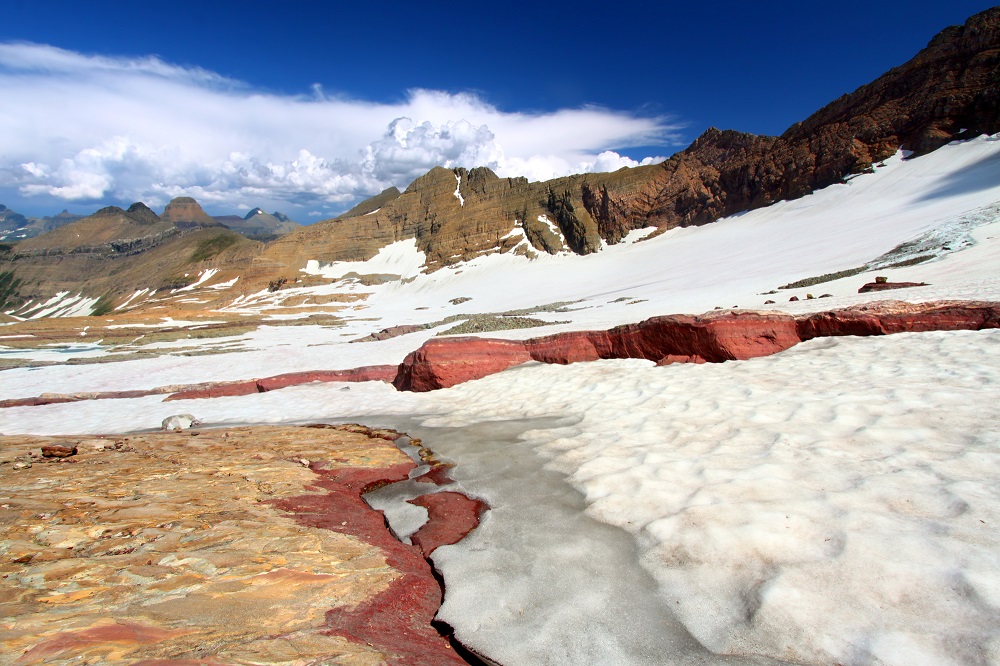Glacier National Park has the second highest concentration of glaciers in the Lower 48 States. Despite the fact that there are larger and more impressive glaciers in Alaska, and glaciers can be easily seen both in the Pacific Northwest and elsewhere in the Rocky Mountains, millions of park visitors make the trek to northern Montana annually to enjoy the glaciers, scenery and wildlife of one of the ten oldest national parks.
There are about 25 active glaciers remaining in the park. An active glacier is defined as one that meets the USGS minimum size criterion for a glacier, which is about 25 acres. Below this size, the ice remains stagnant and does not move downhill under the weight of the snow mass (as a glacier should due to sufficient ice mass to flow under gravity). Glacier National Park contained approximately 150 glaciers around 1850, at the end of the Little Ice Age. The Little Ice Age was a period of widespread cooling on Earth between approximately 1300 and 1850.
How long will the glaciers last in the park? It is unknown how long there will continue to be glaciers in the park as they are rapidly shrinking. The park more than a decade ago posted signs which predicted that all of the glaciers in the park would be gone by 2020. These signs were replaced in 2020 after the US Geological Survey forecast model changed. Nevertheless, the glaciers remain in danger. It is believed that there will not be any active glaciers in the park in 2030.
Jackson Glacier
This is the seventh largest glacier in the park and the easiest for visitors to see. The glacier sits on the north side of Mount Jackson. It can be viewed from the Jackson Overlook on Going to the Sun Road, between Saint Mary Lake to the east and Logan Pass to the west – it is five miles east of Logan Pass. Jackson Glacier was long ago a part of Blackfoot Glacier, one of the largest glaciers in the park.
Salamander Glacier

This glacier sits in a basin just above Grinnell Glacier and is visible from your car while driving into the Many Glacier area.
Grinnell Glacier

Named for American conservationist George Bird Grinnell, the glacier is the most frequently visited in the park. The classic hike to the glacier is via the Ginnell Glacier Trail, with the trailhead in the Many Glacier area. A few miles can be cut off this hike by taking the two boats runs by the park concessionaire. Alternatively, the Grinnell Glacier Overlook is reached by a challenging but popular hike on the Highline Trail from Logan Pass.
Sperry Glacier

Sperry Glacier sits on the north slope of Gunsight Mountain west of the Continental Divide and is one of the largest glaciers in the park. The easiest way to see the most studied glacier in the park is via a 1.3 mile one way hike from Logan Pass with a pair of binoculars. It can also be reached by the more challenging Sperry Glacier Trail which begins at the Lake McDonald Lodge.
Piegan Glacier
This is one of the few glaciers in the park that has not changed substantially since the 1930s. It sits on the southeast slope of Piegan Mountain and can be seen while on the trail during a challenging hike from the Siyeh Bend Trailhead to Piegan Pass.
